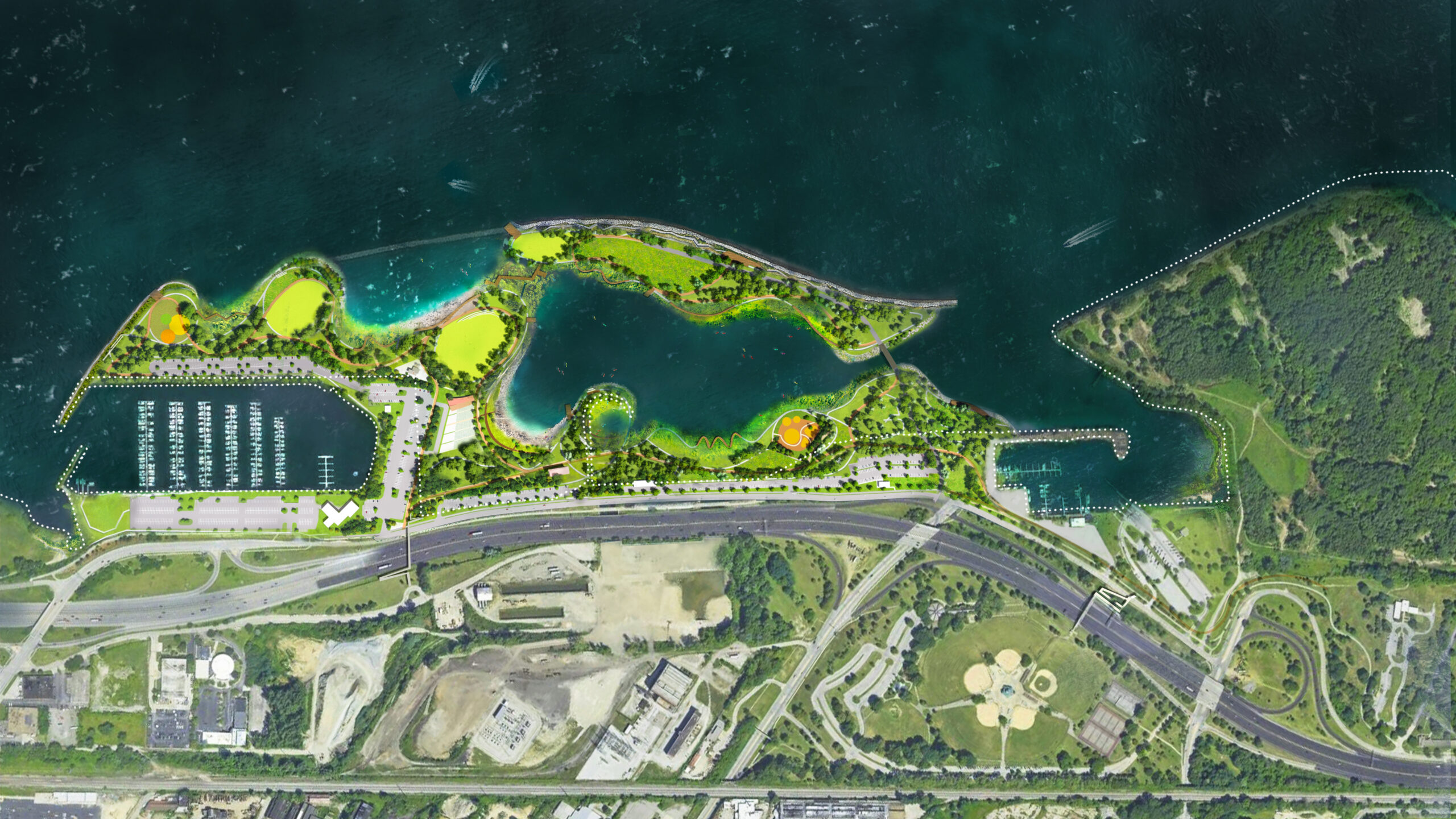
Image Credit: WRT, LLC
KS Associates, Inc. is one of six engineering consultants on the design team led by Arup US, Inc. for the Cleveland Harbor Eastern Embayment Resiliency Strategy, known as “CHEERS.” CHEERS is a major, multi-year initiative aimed at transforming the hardened edge of Cleveland’s eastern Lake Erie shoreline into a community asset. CHEERS will improve lakefront parks to better connect people to the waterfront, create a resilient lakefront, restore coastal habitats, and embrace the lake as an asset for future generations.
Beneficially Reusing Dredge Material to Improve Coastal Resilience Along I-90
A key transportation-related component of CHEERS is the design of breakwaters to protect a section of Interstate 90 (I-90) that is prone to flooding during major storms. Motorists traveling westbound on I-90 near the E. 55th Street Marina have a spectacular view of Lake Erie. However, this stretch of interstate can become treacherous when Lake Erie waves crash over the breakwater onto the interstate, causing severe driving hazards. This problem is compounded during colder months, when the water freezes and turns the interstate into an ice rink.
The CHEERS project will improve the resilience of this coastline from storm events by constructing breakwaters, park areas, and improved coastal habitats to protect I-90 from wave energy and flooding. A portion of the breakwaters for the CHEERS project will help to hold back waves from reaching I-90. To design this area, KS Coastal Engineers have been applying specialized wave modeling capabilities to evaluate existing conditions and develop future-looking data that gives the design team important information to protect the area going forward.
Improving the dangerous section of I-90 will benefit transportation locally, regionally, and globally by improving roadway safety on this transcontinental interstate.
SWAN Modeling to Advance the Design
KS Associates is applying the advanced Simulating Waves Nearshore (SWAN) and Delft3D-FLOW model to the CHEERS project area to evaluate wave conditions, wind and wave-drive circulation, the water-borne transport of debris, and potential effects on erosion and sedimentation at the east end of Cleveland Harbor. These models are useful in estimating and visualizing future wave and wind conditions to evaluate how these forces will affect the project when constructed.
The models below show existing conditions of the site and wave conditions based on the proposed design. Note in the second image, the proposed breakwater is dissipating wave energy.


Modeling has also been helpful in pursuing funding. The Cleveland-Cuyahoga County Port Authority has applied for a Promoting Resilient Operations for Transformative, Efficient, and Cost-Saving Transportation (PROTECT) Grant from the Federal Highway Administration for the Cleveland Cornerstone Breakwater. Wave transformation modeling results were used in the grant application to evaluate nearshore wave heights, wave setup, runup, overtopping, and the potential reductions in overtopping and road closures with part of the CHEERS containment breakwaters in place.
In addition to the grant applications, numerical modeling has provided the design team with elevated insight to how natural conditions will affect the project in the near and long term. Modeling, along with local stakeholder input and thorough evaluations of existing conditions, have been used by the design team to tailor the project to site conditions and the needs of the region and local community.